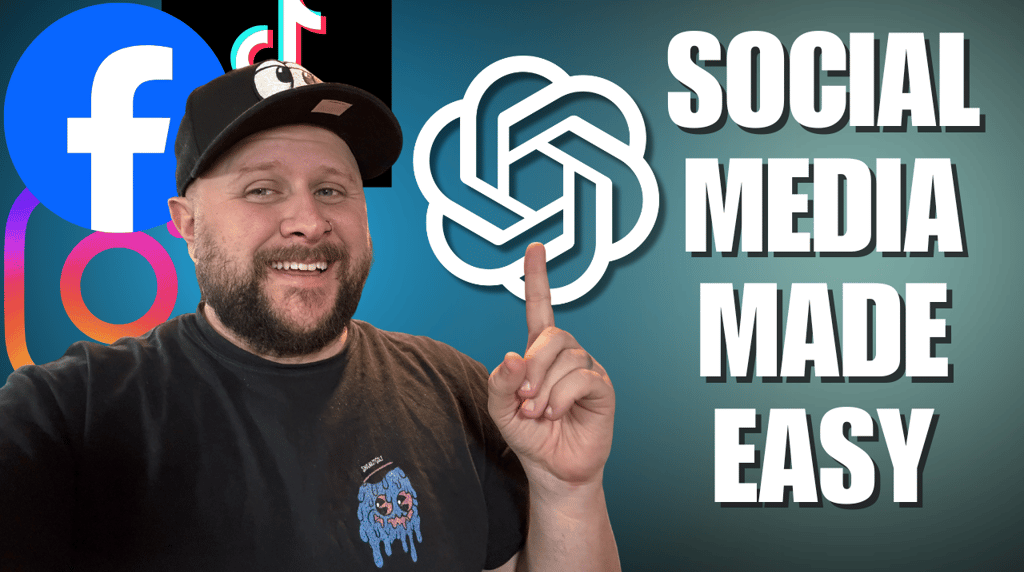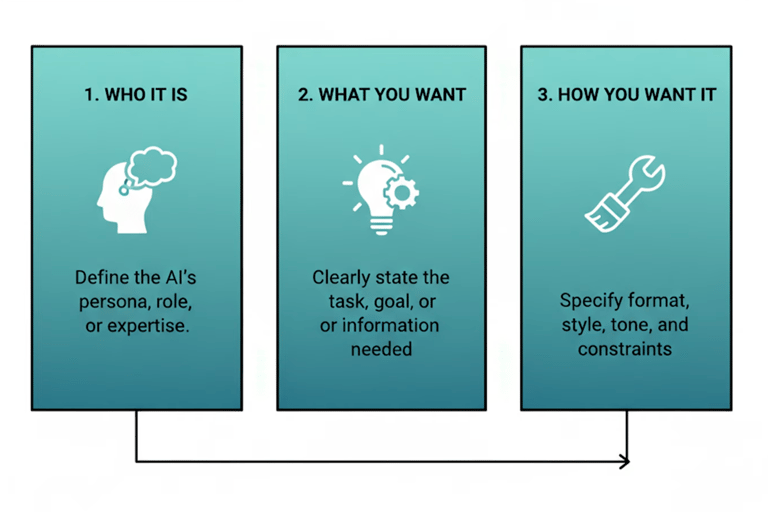How to Create a Week of Social Media Posts in Minutes with AI in the Church
Discover how pastors and ministry leaders can use AI in the church to create a full week of social media posts quickly and effectively.


Stuck at the Blank Screen Again?
Do you ever sit down to write a post about your church’s next event—only to stare at a blinking cursor for what feels like forever? You’re not alone. Between sermon prep, hospital visits, youth retreats, and children’s ministry planning, creating social media content often falls to the bottom of the list.
But here’s the good news: AI can help. With the right prompts, you can generate a full week’s worth of engaging church posts in just minutes.
Follow along with this video!
1. The 3-Step Framework for AI Prompts
When using ChatGPT or another AI tool, think of your prompt as your instructions. A good prompt includes three key parts:
Tell the AI who it is – For example: “You are a social media expert for a local church.”
Explain what you need – Be specific: “Write a post about our youth Friendsgiving event this Friday at 6 PM with free food and games.”
Define the output – Format matters: “Start with a 2-sentence story, keep the language youth-friendly, and close with a warm invitation.”
This simple framework ensures your posts feel consistent, clear, and on-brand.


2. Save Time with Reusable Prompts
Once you get a post you really like, don’t reinvent the wheel next week. Instead, ask ChatGPT to turn it into a system prompt—a reusable template that produces similar results every time.
For example:
“You are a social media expert for First Church. Write a short engaging post that advertises an upcoming church event. Begin with a short story, include clear event details, add a bullet point list of what to expect, close warmly, and finish with 3–4 hashtags.”
Save this system prompt in a Google Doc and use it across ministries—youth, worship, children, outreach—just by swapping the event details.
3. Take It Further with a Custom GPT
Tired of copying and pasting? OpenAI lets you build Custom GPTs—personalized AI assistants designed for your church.
Imagine having a “First Church Social Media GPT” ready on your sidebar. Type in your event details (like “Kickball Tournament at Victory Fields, Dec. 20 at 4 PM”), and it instantly generates posts, hashtags, and even graphic ideas.
This way, you’re not starting from scratch every week—you’re simply plugging in new details and hitting publish.
A Quick Example: Wesley AI
One example of how AI can serve the church beyond social media is Wesley AI. It’s a chatbot that lives on your church website, answering visitor questions any time of day—even while you sleep. Churches using it have seen it save hours of staff time each week by handling common questions like service times, directions, or children’s check-in. It’s just one illustration of how AI tools can free up leaders for people-focused ministry instead of administrative tasks.
4. Why This Matters theologically
John Wesley often reminded believers that every tool—whether it was a printing press, a hymnal, or a small group—should be used to spread scriptural holiness. Social media is simply today’s version of that. By letting AI handle the repetitive tasks, pastors and leaders can focus on the relational heart of ministry: discipleship, prayer, and presence.
As Paul wrote, “I have become all things to all people so that by all possible means I might save some” (1 Corinthians 9:22). Using AI for church communication is one more way of meeting people where they are—online.
Where to Start This Week
Write down one upcoming church event.
Open ChatGPT (or your AI tool of choice).
Use the 3-step framework to generate a post.
Save your favorite prompt in a Google Doc for future use.
If you’re ready, try creating a custom GPT just for your church.
Closing Encouragement
Social media should never be a burden that keeps you from ministry. Think of AI as a helper that takes the “blank page” stress away, freeing you to spend more time with people. Technology is not here to replace your calling—it’s here to release you into it.

